
Primula: the Joys of Spring and Beyond
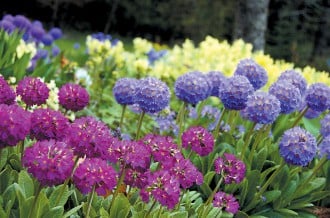
Contributor

Primula is one of the three great garden genera. In terms of the number of varieties grown, the income generated by the horticultural industry, or its hold over the hearts and minds of the public, only Rhododendron and Rosa can compare with it
John Richards
Introduction to the First Edition, Primula, 1993
Each spring, racks of Skittles-colored flowers arrive at the big box and grocery stores around the country, providing a welcome splash of color after the drab days of winter. Such a kaleidoscope of color may be the first and only experience that many gardeners have with primroses (Primula). This wide- spread genus lends its name to the family, Primulaceae, the name taken from the Italian word for spring (primavera), as the majority of species bloom at that season. It’s unfortunate that many gardeners view this incredibly diverse genus as full of disposable annuals and reserve bed space for “more interesting plants.” For a long time, I, too, viewed the more common primroses as too pedestrian.
That all changed when I moved from Palo Alto north to Juneau, Alaska, to become the first manager of the Jensen-Olson Arboretum. Our founder, Caroline Jensen (no relation; just good plant karma) was fond of the genus (particularly the Asiatic species) and planted it generously. Juneau’s cool, maritime climate proves to be perfect for Primula cultivation. My first spring here found me in beds awash in these colorful plants, and I quickly realized how little I knew about them. I embraced the situation enthusiastically, found a copy of John Richards’s encyclopedic Primula (Timber Press, 2003), and rolled up my sleeves to see what had so captivated Caroline.
The genus Primula includes more than 400 species distributed mostly around the Northern Hemisphere. Botanists have subdivided this large genus into thirty-seven sections. The vast majority can be found in the high, damp meadows of the Himalayas and western China, where 334 species are native. They are also familiar spring wildflowers of the European country-side, where they have been appreciated for centuries.
Clues to Cultivation
Generally native to woodlands and cool mountain conditions, most species do poorly in hot, dry-summer climates. Their broad, fleshy leaves have many stomata and will rapidly wilt if subjected to harsh afternoon sunlight. A general rule of thumb in growing the vast majority of Primula is to give them conditions that approximate those they would experience growing in the wild. Gardeners in the Pacific Northwest, California’s coastal fog belts, and other cool, moist temperate regions are likely to have the greatest success in cultivating this captivating genus. Most of the Asian species demand a rich organic soil that stays constantly moist; some are at their best in bog or streamside situations. The alpine species require a rapidly draining, gritty soil that mimics the conditions of their high-mountain scree habitats.
Some of the “everyday” species grow well in average garden conditions. Many primroses that do best under these conditions happen to be hybrids, including the polyanthus group (Primula xpolyantha, our Skittles-colored friends) and the “Julianas” (P. xpruhoniciana). Also performing well under general garden conditions are some of the European species, such as English primrose (P. vulgaris), oxlip (P. elatior), and cowslip (P. veris). Fairy primrose (P. malacoides) is often used as a cool season bedding plant in California and the Southwest, where they are usually treated as annuals. Other adaptable species include some of the “candelabra” types (known for their tiered inflorescences), such as P. japonica, P. bulleyana, and P. florindae. Here in the Arboretum, drifts of drumstick primrose (P. denticulata) flower with abandon in mid-May; they are among the easiest of species to grow and are widely available.

A Selection of Primula
The following are some of the high-performing species of Primula that form the foundation of our expanding collection. We are striving to have the largest documented collection of Primula this side of the Atlantic, recognized by the North American Plant Collections Consortium. We currently have sixty-nine species and cultivars recorded, with many more to be grown as seed of new species becomes available to us. [When known, Sunset climate zones are provided in brackets.]
Primula alpicola var. alba
This lovely, white-flowered candelabra type has two or three whorls of fragrant flowers atop tall stems. Easily grown, it is long lived in cool humid climates; it intensely dislikes hot weather or dry soils. The purple variant (P. alicola var. violacea) has flowers that can be deep pink, purple, or violet with a white powdery meal (farina) on the face of each blossom. [3-6, 17]
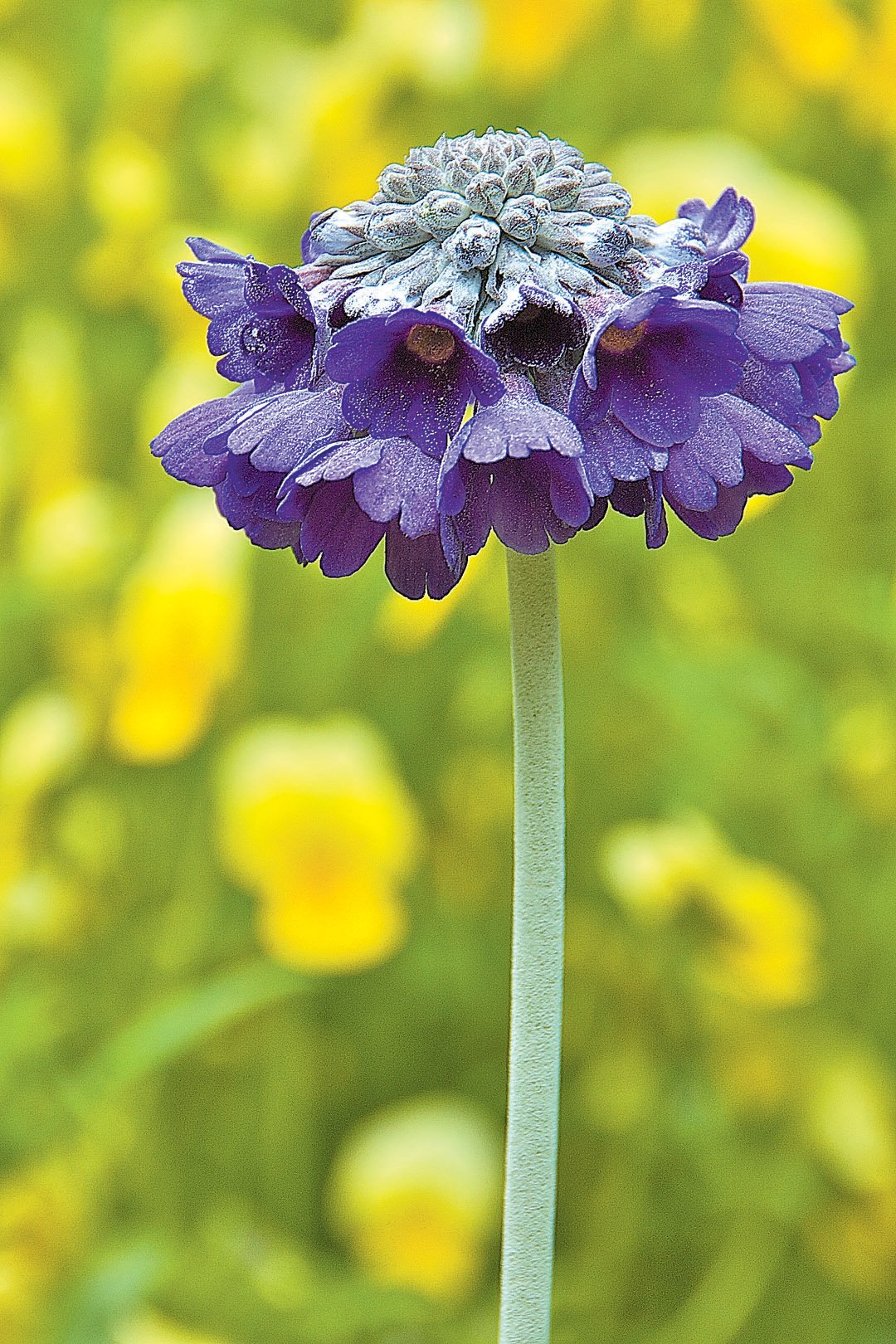
Primula capitata
This delightful summer-and fall-blooming species closes out the Primula season for us; it is often still in flower when the first hard autumn freeze strikes. The flower heads are flattened spheres and consist of tightly packed, deep purple buds covered in a silvery farina; only the outer ring of buds usually open fully. This species is not long-lived in the garden, but can easily be grown from seed and will self-sow if not deadheaded.
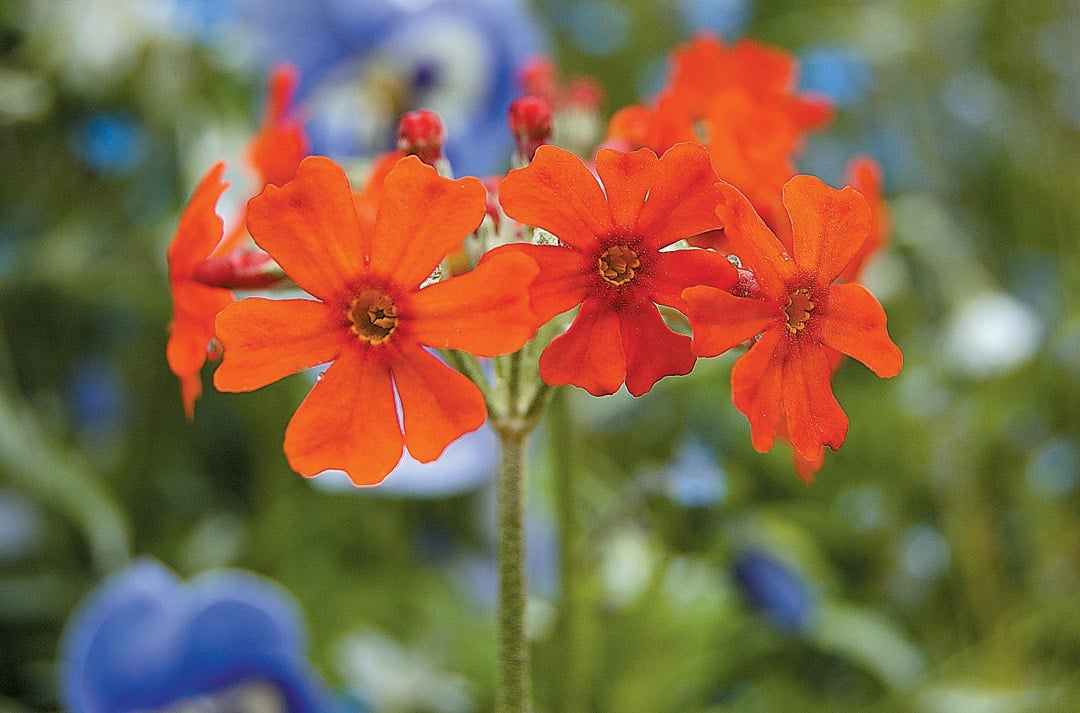
Primula cockburniana
One of the smallest candelabra primulas, this species thrives in deep, rich moist soils with partial shade. The bright orange flowers are held in tiers on stems that can reach twelve inches tall.
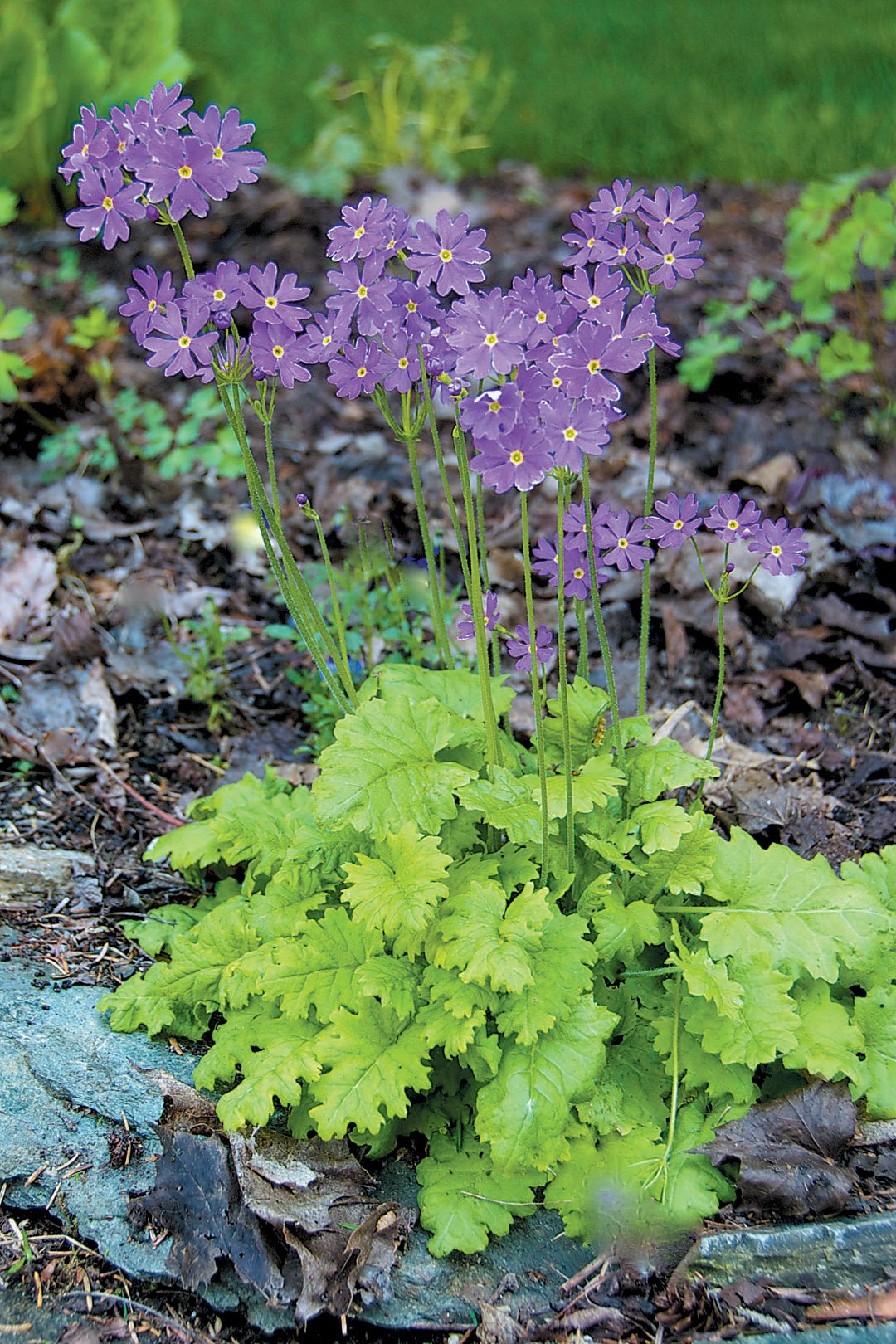
Primula cortusoides
This central Asian species belongs to a group often referred to as “woodland primula” because of their requirements for cool, shaded sites. This is a long-flowering plant with bright pink, purple, or white flowers, which, in Juneau, are present from late May through mid-August. As its name suggests, the flowers resemble those of the closely- related genus, Cortusa, another member of Primulaceae.
Primula denticulata
Drumstick primrose is the garden workhorse of the genus. Its adaptability makes it indispensable for anyone wanting to try Primula. Colors include varying shades of magenta, white, and a range from light lavender through deep lilac. Flowers appear in globular heads (like drumsticks) on twelve-inch stems. [1-6]
Primula elatior
Oxlip is widespread in southern Europe, the British Isles, and east to Turkey and Siberia. The pale yellow flowers, held in one-sided clusters, are larger than those of cowslip (P. veris). The subspecies meyeri has blue to purple flowers with a yellow eye.
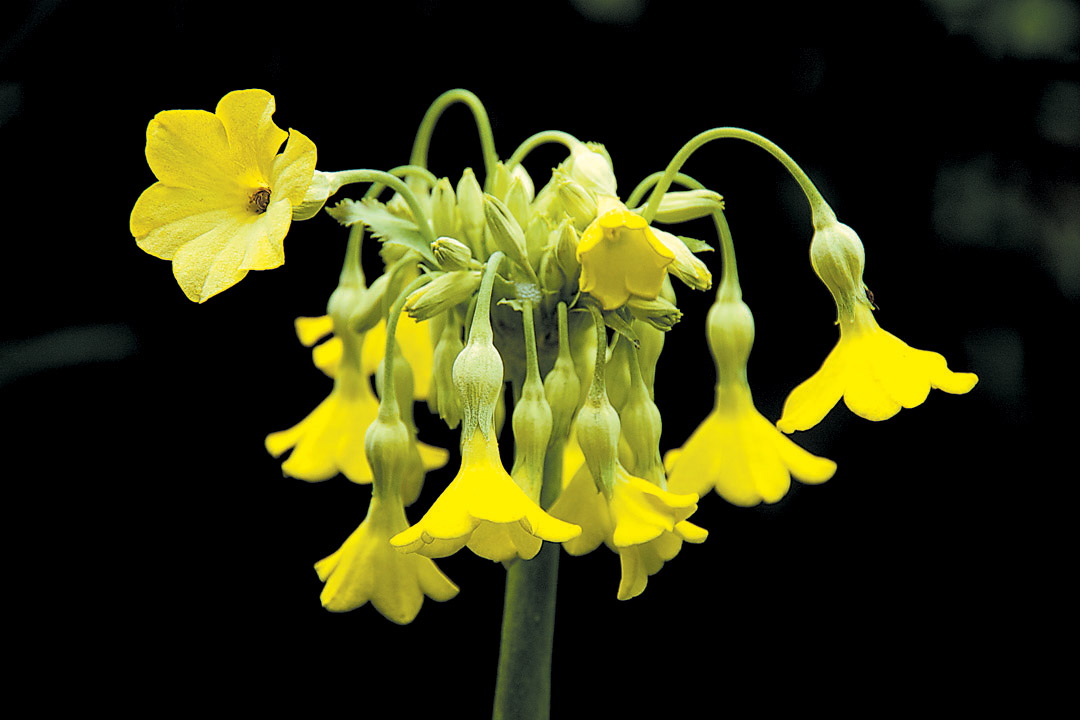
Primula florindae
Giant cowslip is one of the most prominent garden species for its size: flower stalks may reach five feet in height and have up to eighty pendant flowers per stem. The fragrant, bright yellow flowers appear from late June through early September in Juneau. Other colors range from mango and coppery orange to crimson. It loves wet sites and can easily be grown along the edges of ponds and streams. [3-6,15-17]
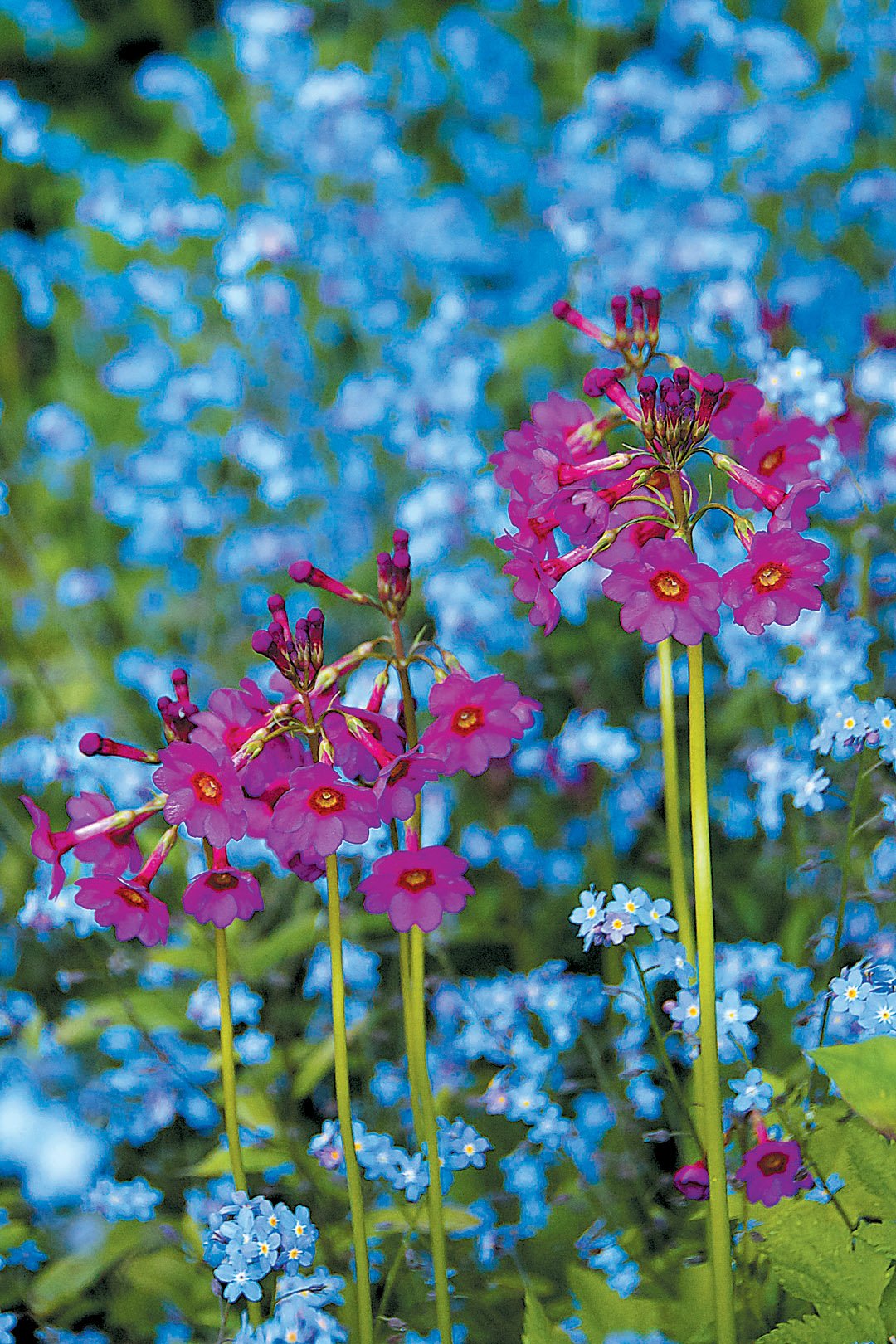
Primula japonica
The best known of the candelabra primulas, this is also one of the easiest species to grow. The multi-tiered inflorescences are most often reddish purple, but the flowers come in varying shades from red to pure white. Several named cultivars are available: ‘Miller’s Crimson’ and ‘Postford White’ are the most common. With cool, moist soil conditions, it will self-sow into spectacular colonies that bloom in early summer. [2-6, 15-17]
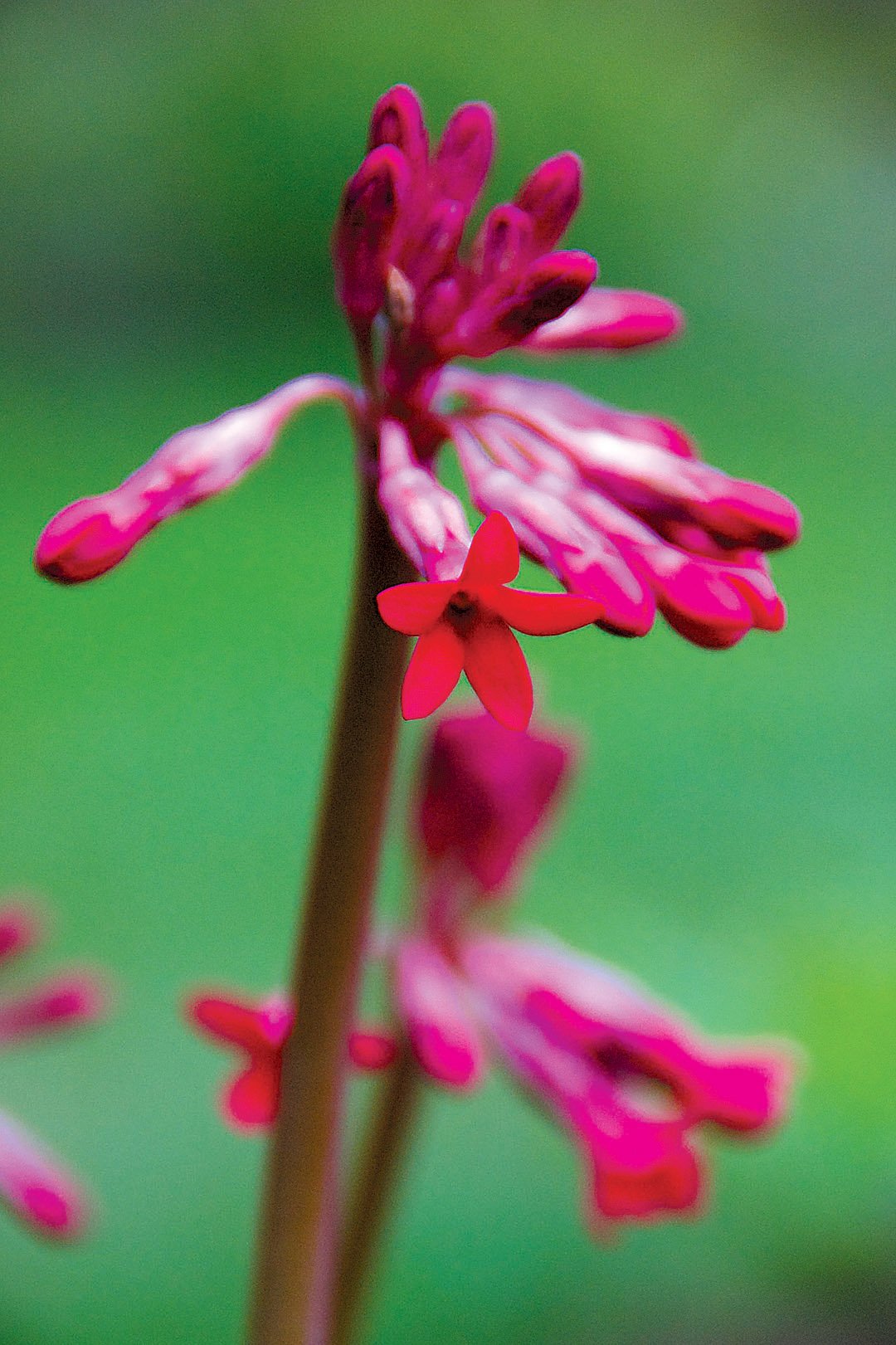
Primula maximowiczii
This relatively unknown species from China has brick red to crimson flowers with reflexed petals, similar to those of shooting star (Dodecatheon), a close relative in the Primulaceae.
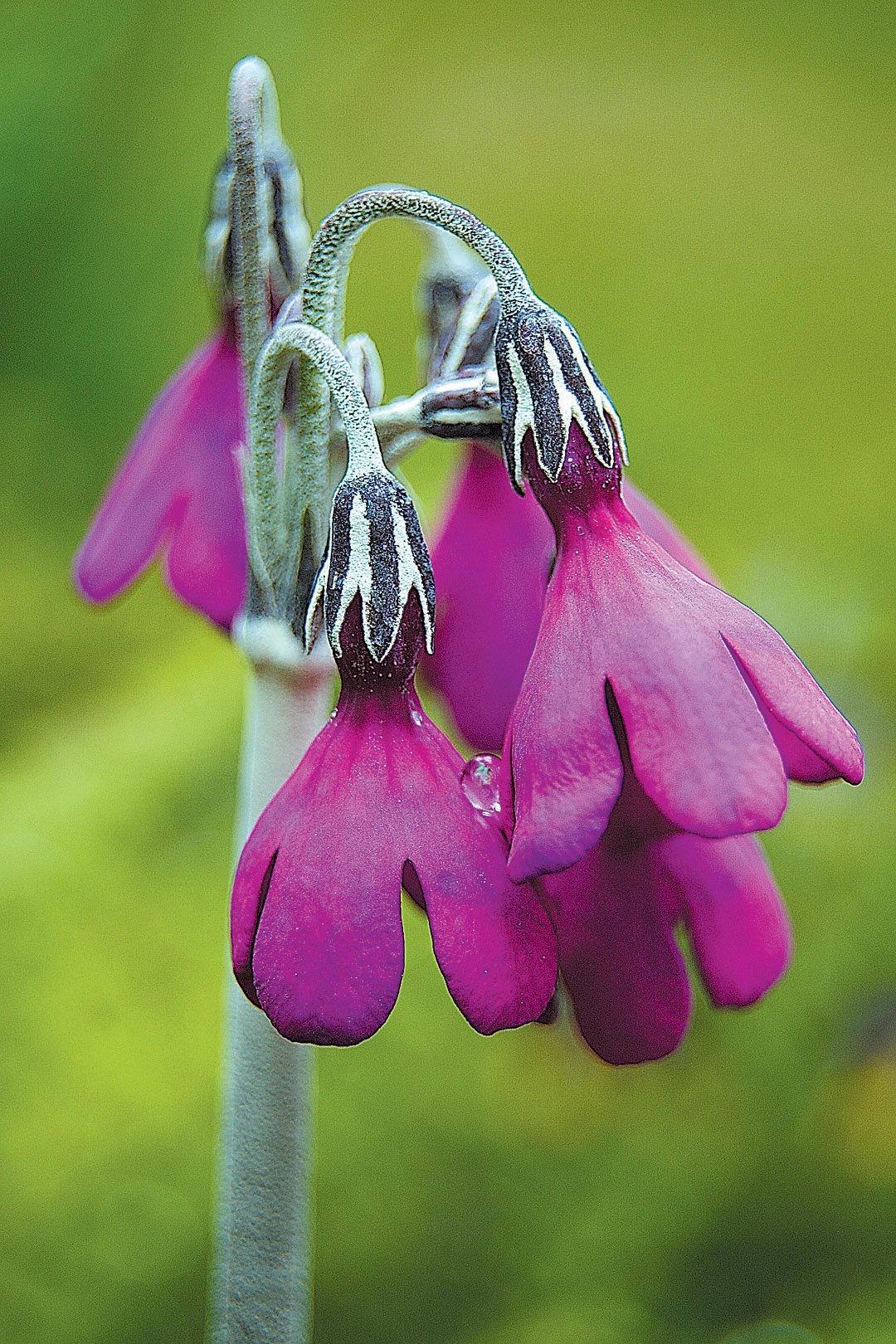
Primula secundiflora
Probably my favorite species, its striking, pendant, dark crimson, bell-shaped flowers have striped, purplish black and silver calyxes. They require a humus-rich, moist, but well drained soil that does not dry out, but they are also intolerant of waterlogged soil—not a culturally easy situation to establish, but well worth the extra effort.
Primula veris
Cowslip is one of the most common and wide- spread species, ranging from the United Kingdom to the Amur River basin in the far east of Russia. Shakespeare mentions this beloved European wild- flower in his prose. This May-blooming, golden yellow-flowered plant can easily naturalize if it finds conditions to its liking. Red-flowered forms are also available, though these are likely to be hybrids with English primrose (P. vulgaris). [2-6, 15-17]
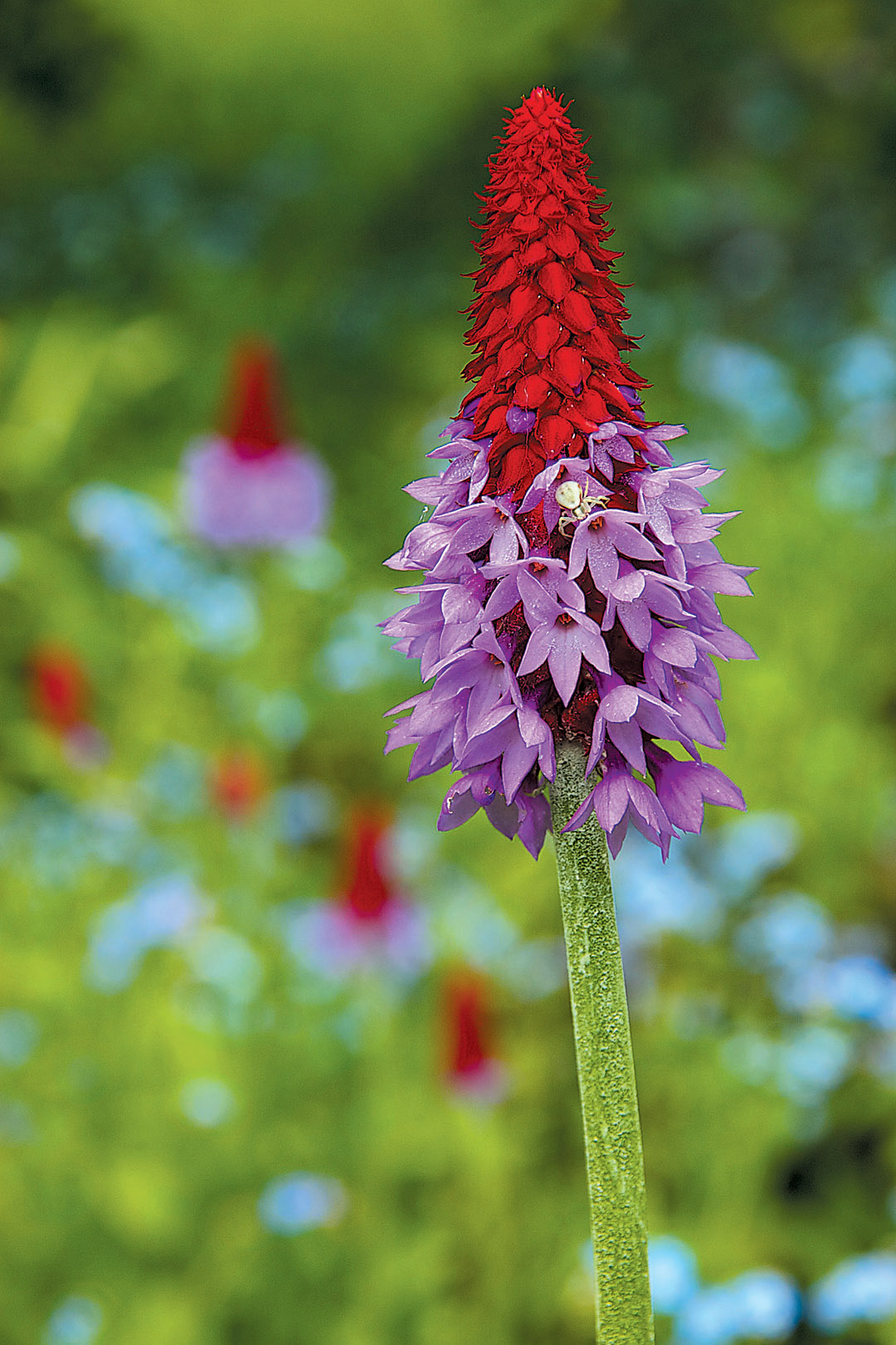
Primula vialii
Sometimes called “poker” primrose for the resemblance of its inflorescences to the flower spikes of Kniphofia, this distinctive species has spikes of red calyxes with blue violet corollas that open from the bottom of the inflorescence up the stem. One of the last species to emerge from the ground in spring, the plants should be marked so as not to inadvertently disturb their crowns while cultivating beds. [4-6, 15-17]
Other Garden-worthy Genera
Other garden-worthy members of Primulaceae include the following genera: Androsace, a large genus of beloved alpine rock garden plants from southern Europe; Cortusa, mountain natives from central to eastern Europe and China; Dodecatheon, the beguiling shooting stars, which, according to some authors, are now included within the genus Primula (why would anyone want to do away with such a wonderful botanical name?); and Soldanella, the snowbells of the European mountains. Having cultivated species of all the above genera and now on the quest to have the largest North American collection of primroses, it’s safe to say that the primula family is likely my favorite family of herbaceous perennials.
Share:
Social Media
Garden Futurist Podcast
Most Popular
Videos
Topics
Related Posts

Low Maintenance Gardens – Better for Pollinators and People
Autumn 2022 “I come out every day. It’s therapy, my meditation.” Janet’s young garden transformed from overgrown, invasive plants to mostly natives. The dailiness of

Calochortophilia: A Californian’s Love Affair with a Genus
Summer 2022 I can chart the progression of my life by Calochortus. For the last two decades, at least. As a teenage girl growing up

Pacific Plant People: Carol Bornstein
Spring 2022 Public gardens play a key role in demonstrating naturalistic planting design, selecting native and adapted plants for habitat, and testing techniques for reducing

Add Year-Round Interest and Winter Blooms for Pollinators
Spring 2022 This article was created from an Interview by Merrill Jensen with Neil Bell in the Summer of 2021 for our Pacific Plant People











Responses